![]()
![]()
![]()
Use LEFT and RIGHT arrow keys to navigate between flashcards;
Use UP and DOWN arrow keys to flip the card;
H to show hint;
A reads text to speech;
69 Cards in this Set
- Front
- Back
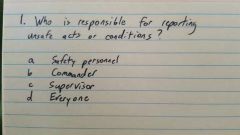
|
d. Everyone |
|
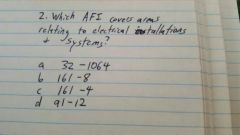
|
a. 32-1064 |
|
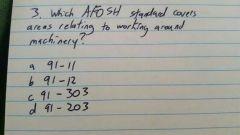
|
b. 91-12 |
|
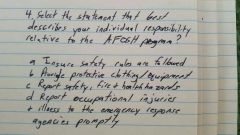
|
c. Report safety, fire and health hazards. |
|
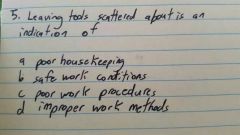
|
a. Poor housekeeping |
|

|
a. All mishaps. |
|
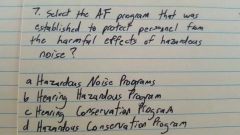
|
c. Hearing Conservation Program |
|
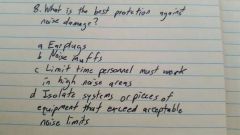
|
d. Isolate systems that exceed noise limits. |
|

|
a. 300 volts |
|
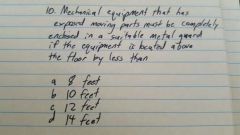
|
a. 8 feet |
|
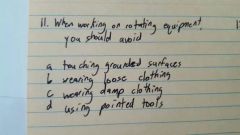
|
b. Wearing loose clothing |
|
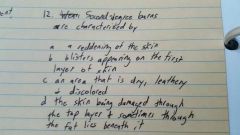
|
b. Blisters appearing on the first layer of skin. |
|
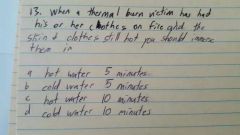
|
d. Cold water 10 minutes |
|
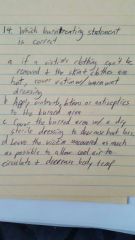
|
c. Cover the burned area with a dry sterile dressing to decrease heat loss. |
|
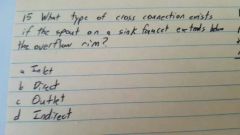
|
a. Inlet |
|

|
c. Reduced pressure device. |
|
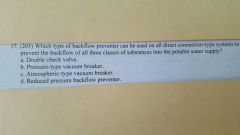
|
d. Reduced pressure backflow preventer. |
|
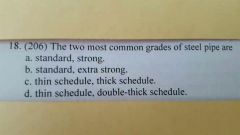
|
b. Standard, Extra Strong |
|
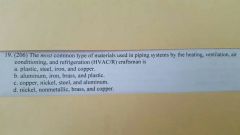
|
a. Plastic, steel, iron and copper. |
|
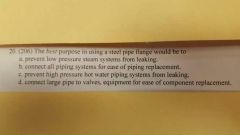
|
d. Connect large pipe to valves, equipment for ease of component replacement. |
|
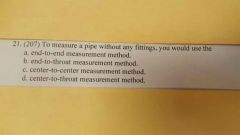
|
a. End-to-end measurement method. |
|

|
b. 1/4 turn |
|
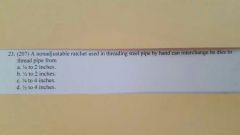
|
a. 1/8 to 2 inches. |
|
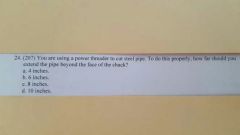
|
c. 8 inches |
|
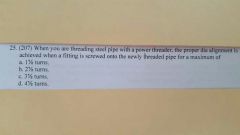
|
c. 3 1/2 turns. |
|
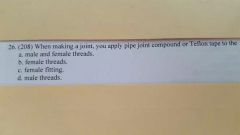
|
d. Male threads. |
|
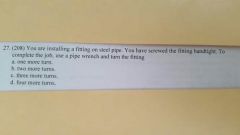
|
b. Two more turns. |
|
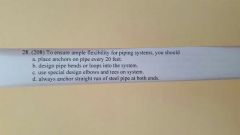
|
b. Design pipe bends or loops into the system. |
|

|
d. Wall thickness. |
|
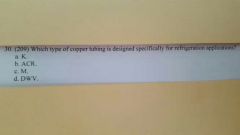
|
b. ACR |
|
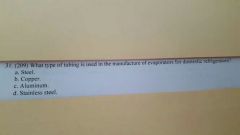
|
c. Aluminum |
|
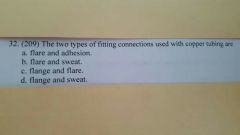
|
b. Flare and sweat. |
|
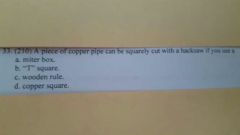
|
a. Miter box |
|

|
c. Lever type bender. |
|
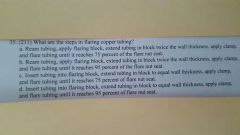
|
a. Ream tubing, apply flaring block, extend tubing in block twice the wall thickness, apply clamp, flare tubing until it reaches 75% of the flare nut seat. |
|
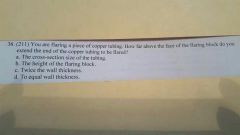
|
c. Twice the wall thickness. |
|

|
d. Prevent twisting of the tubing. |
|
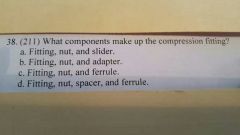
|
c. Fitting, nut and ferrule. |
|

|
c. 15 psi |
|
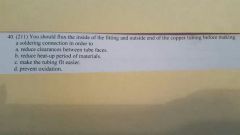
|
d. Prevent oxidation. |
|
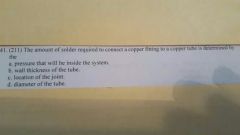
|
d. Diameter of the tube. |
|
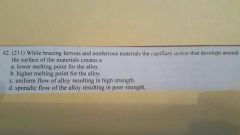
|
c. Uniform flow of alloy resulting in high strength. |
|

|
a. Solvent |
|
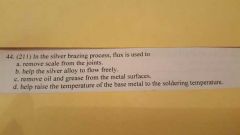
|
b. Help the silver alloy to flow freely. |
|
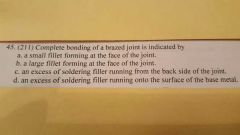
|
a. A small fillet forming at the face ofthe joint. |
|
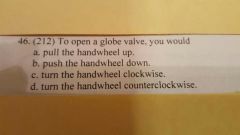
|
d. Turn the handwheel counterclockwise. |
|
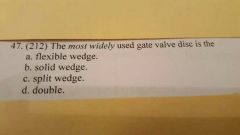
|
b. Solid wedge. |
|
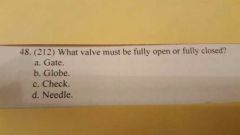
|
a. Gate. |
|
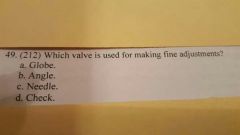
|
c. Needle |
|
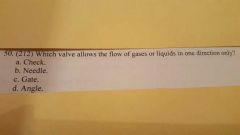
|
a. Check. |
|
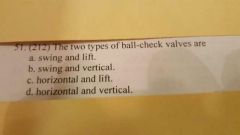
|
d. Horizontal and vertical. |
|
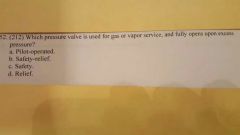
|
c. Safety |
|

|
d. Working temperaturesof the system. |
|
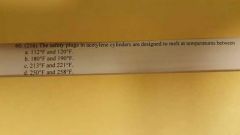
|
c. 213°F and 221°F |
|
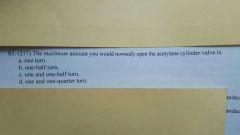
|
c. One and one-half turn. |
|
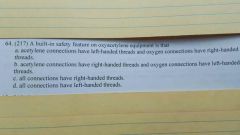
|
a. Acetylene connections have left handed threads and oxygen connections have right handed threads. |
|
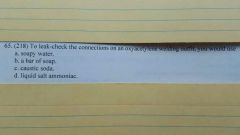
|
a. Soapy water |
|
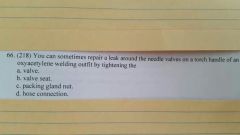
|
c. Packing gland nut. |
|
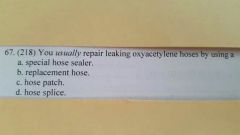
|
d. Hose splice. |
|
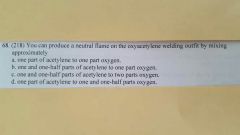
|
a. One part acetylene to one part oxygen. |
|
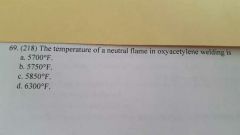
|
c. 5850°F |
|

|
a. Acetylene torch valve. |
|
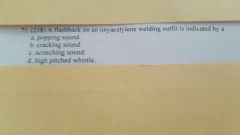
|
d. High pitched whistle. |
|
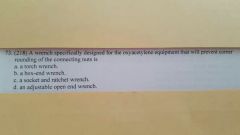
|
a. A torch wrench. |
|
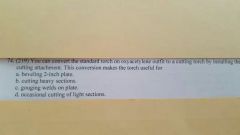
|
d. Occasional cutting of lighter sections. |
|
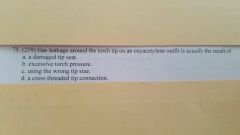
|
a. A damaged tip seat. |
|
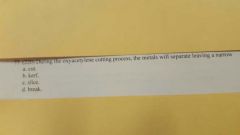
|
b. Kerf. |
|
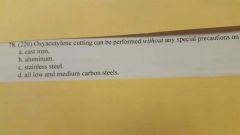
|
d. Low and medium carbon steels. |
|
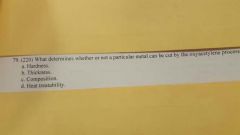
|
c. Metal composition. |

